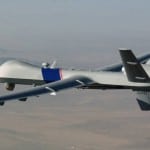
An early warning program designed to alert local and national authorities of biological weapons attack doesn’t provide nationwide coverage, is limited in the threats it can detect, and no longer performs routine large-scale exercises where the program is deployed, leaving the U.S. less able to detect and respond to a bio-terrorism attack, says a new report by a government watchdog. The report also says that that in almost every area where the BioWatch equipment is deployed, that is 34 of…

 By
By 











